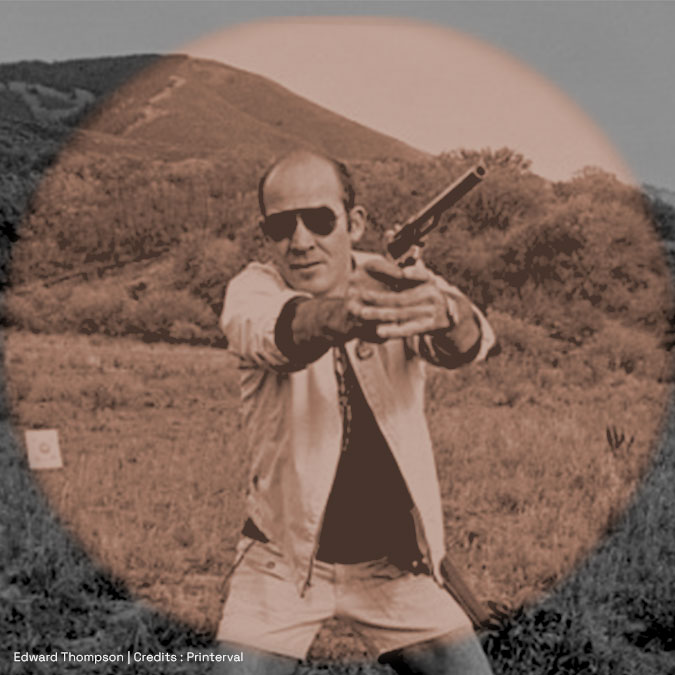Second-person POV: the forgotten narrative voice
Toolbox articles are shorter-form pieces that explore wider literary tropes, like point-of-view narrative and tense. Sign up to our newsletter to receive these articles direct to your inbox, before they’re published on the site.
Hello fetish fans 🟠 As this is the second instalment of the newsletter, I’ve decided to run with the theme of ‘second’ and talk about second-person POV, a narrative voice that I’m a big fan of.
Second-person POV is fast paced, exciting and often a refreshing foundation on which to create fictional universes. But it’s seldom used in mainstream fiction. Let’s take a look at what it has to offer, and why it is the least-common POV.
What is second-person POV?
Before we look at an example and consider why exactly second-person POV is less commonly used than its first and third-person counterparts, let’s quickly remind ourselves what exactly second-person POV is.
While first-person narration uses pronouns like ‘I’, ‘me’, ‘we’ and ‘us’ to tell the story, and third person uses ‘he’, ‘she’ and ‘they’, second person will use ‘you’, ‘your’ and ‘yourself’.
For instance, imagine that I’m writing a story about a literary nerd typing up an entry for his newsletter. In first-person narrative, it might start as follows:
I sit down to work on my newsletter. My fingers tremble with fear at the idea of no one liking what I write.
This same story in third person would be more like this:
He sits down to write his newsletter. His fingers tremble with fear at the idea of no one liking what he writes.
And here’s how it would look in second person:
You sit down to write your newsletter. Your fingers tremble with fear at the idea of no one liking what you write.
Beyond just noticing the difference in pronouns, I’m sure that you also clocked how each narrative mode creates its own mood. While the first and third-person versions of my story bring into play a new and unknown character, the second-person POV draws the actual reader into the story. Compared to the other two narrative modes, it is direct, fast-paced and confrontational – maybe even a little unsettling.
Let’s take a look at a real-life story written in second-person POV to see what it looks like when deployed by a master of the form.
Second-person POV in action
‘How to talk to a hunter’ is the first story in Pam Houston’s award-winning collection, Cowboys are my weakness. It focuses on a protagonist (you) who struggles with the infidelities and mounting flaws of their romantic partner, the hunter.
Here’s the opening paragraph:
When he says “Skins or blankets?” it will take you a moment to realize that he’s asking which you want to sleep under. And in your hesitation he’ll decide that he wants to see your skin wrapped in the big black moose hide. He carried it, he’ll say, soaking wet and heavier than a dead man, across the tundra for two—was it hours or days or weeks? But the payoff, now, will be to see it fall across one of your white breasts. It’s December, and your skin is never really warm, so you will pull the bulk of it around you and pose for him, pose for his camera, without having to narrate this moose’s death.
Let’s take stock of some immediate observations in the story.
- It’s fast-paced (I don’t know about you, but I feel like I’m reading this quicker than I would a typical piece of fiction)
- We feel immediately immersed into the fictional universe
- Harking back to our last newsletter on openings in fiction (which you can read here, by the way), the paragraph is heavily weighted to intrigue over exposition.
These qualities tend to be consistent with fiction written in the second-person POV. When done well, it grabs our attention and leaves us hungry for the next line. It makes us feel like we are really part of the story, that we’re living the story – because after all, it is us the reader who is really the main character.
‘How to talk to a hunter’ is a great example of second-person POV at its best. Not just because it masterfully demonstrates the narrative form’s qualities, but also because the form is a perfect fit for the style. None of the characters are named, allowing the reader to better project themselves into the story; it’s action packed, with a tonne of developments that roll along at breakneck speed; it’s not about character development, but rather about how the main character reacts to events that occur around them (we can even see this in the opening paragraph as the de facto narrator, you, reacts to the hunter’s question, ‘Skins or blankets?’).
Pam Houston’s story is an example of a writer choosing the form to match the intended style — something that the best writers always do, and what could explain why second-person POV is so seldom used.
Why isn't second-person POV used more often?
For all its qualities, second-person POV is less malleable than its first and third-person cousins. While it creates a compelling sense of urgency, it lacks flexibility. Writers working in second-person often struggle to change gears, to slow the pace down and explore a different side of a character, to set a new tone in an advancing and evolving story. It doesn’t afford authors the space to flex the full range of their literary muscles.
It’s why you’re more likely to find second-person POV in short stories, rather than longer-form fiction; why it’s used as a vehicle for exploring a particular niche instead of a wide-ranging and deep theme; and why, rightly or wrongly, authors often use it as a chance to experiment with ideas rather than laying the foundation for more serious projects.
Try it at home
Why not try this simple exercise to better understand second-person POV and how it differs from other narrative modes?
Dip into the first book you find (provided it’s not written in second-person POV) and pick out a paragraph that appeals to you. Try rewriting it in second-person. Once you’re done, read it back. See how it compares to the original version. Is it faster paced? More engaging? What does it gain from being in second person? And equally important, what does it lose?
Go a step further
We haven’t got round to writing a full fetish analysis of a second-person POV story yet, but you might like our in-depth review of ‘Rondine al Nino’ by the brilliant Claire Vaye Watkins. In it, we take a look at Vaye Watkins’s innovative use of the present and future-tense, and how she uses form to advance her story.
Also, I read a lot of second-person POV fiction to research this newsletter. Below are two short stories and a novel that I would recommend.



